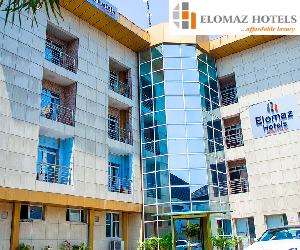The cryptocurrency landscape continues to evolve at a breakneck pace, with new projects emerging to address the growing demands of traders, developers, and investors. Among these innovative ventures is Mira Network, a decentralized platform that has been generating buzz in the crypto community. While it’s still in its early stages, Mira Network is positioning itself as a promising player in the world of decentralized exchanges (DEXs) and beyond. In this article, we’ll dive into what Mira Network is, its unique features, and why it’s worth keeping an eye on as of March 25, 2025.
Mira Network is a decentralized infrastructure platform that aims to blend blockchain technology with artificial intelligence (AI) in a groundbreaking way. Unlike traditional crypto exchanges that focus solely on trading, Mira Network has a broader vision: to universalize access to reliable AI advancements while leveraging the power of decentralization. Launched in 2024 by a team of seasoned entrepreneurs and AI experts from companies like Uber, Amazon, and Accel, Mira Network is still in its testnet phase, meaning its mainnet and native cryptocurrency have yet to launch officially.
At its core, Mira Network is building a trustless ecosystem where AI outputs can be verified using decentralized consensus mechanisms. This combination of AI and blockchain technology sets it apart from conventional crypto exchanges, making it more than just a trading platform—it’s a foundation for developers, businesses, and communities to harness AI in a secure and transparent manner.
The founders of Mira Network, including Karan Sirdesai, Ninad Naik, and Sidhartha Doddipalli, bring extensive experience in AI and technology to the table. Ninad Naik, for instance, previously led AI initiatives at Uber and Amazon, and now serves as Mira’s Chief Product Officer. Their mission is to create an open infrastructure that tackles one of AI’s biggest challenges: reliability. AI systems often produce outputs that contain errors or biases due to their probabilistic nature. Mira Network aims to solve this by enabling trustless verification of AI-generated results through a decentralized network of incentivized operators.
Imagine a platform where AI outputs—whether from models, data, or computations—are transformed into verifiable statements that anyone can independently check. By distributing this verification process across a blockchain-based network, Mira ensures that no single entity controls the system, making it resistant to manipulation and censorship. This vision extends beyond trading cryptocurrencies; it’s about building a robust ecosystem for the future of AI-driven applications.
While Mira Network’s primary focus is on decentralizing AI infrastructure, it also incorporates elements of a decentralized exchange (DEX) to facilitate its ecosystem. The platform introduces a unique concept called “Flows”—crypto-AI primitives that combine models, data, and compute power to solve specific tasks. These Flows act as building blocks for developers to create AI-powered applications, which can then be monetized through Mira’s Flow Market.
Here’s how the exchange aspect ties in: contributors who provide data, compute resources, or AI models are rewarded when their Flows are used. Developers, in turn, can access these resources permissionlessly via Mira’s API, and the revenue generated is equitably distributed among contributors through the Mira Chain. This creates a dual-sided economy that incentivizes both innovation and participation.
Although Mira Network doesn’t yet have a live native token (as it’s still in testnet), its tokenomics are designed to support this ecosystem. Posts on X and web sources suggest that the upcoming MIRA Coin will power transactions, smart contracts, and staking within the network. The team has hinted at features like staking rewards and governance, which are common in DEXs, but with a twist—economic incentives will also tie into the verification of AI outputs using a hybrid Proof-of-Work/Proof-of-Stake mechanism.
Key Features of Mira Network
Trustless AI Verification: Mira’s standout feature is its ability to verify AI outputs in a decentralized manner, ensuring accuracy without relying on centralized authorities.
Read also: Crypto prices rally after Trump backs five coins for ‘crypto reserve’
Decentralized Exchange Capabilities: Through the Flow Market, users can trade access to AI resources, creating a marketplace that blends trading with innovation.
Incentivized Ecosystem: Node operators and contributors are rewarded for their efforts, fostering a self-sustaining network.
Scalability and Partnerships: Mira has partnered with projects like io.net, Aethir, and Spheron to leverage decentralized GPU infrastructure, enhancing its computational power.
Transparency and Security: With $9 million raised in a seed round from investors like Framework Ventures and Bitkraft Ventures, Mira is committed to building a secure and transparent platform.
Why Mira Network Stands Out
The crypto exchange market is crowded, with giants like Binance, Uniswap, and Coinbase dominating the space. So, what makes Mira Network a promising contender? For one, its hybrid approach—combining a DEX with AI infrastructure—offers a fresh perspective. While most exchanges focus on speed, liquidity, and low fees, Mira targets a niche yet growing demand: reliable AI tools for developers and businesses.
Additionally, Mira’s emphasis on decentralization aligns with the ethos of the crypto community. By using blockchain to ensure sovereign ownership of AI resources and transparent value attribution, it avoids the pitfalls of Web2 marketplaces, where middlemen often take a disproportionate cut. The platform’s recent milestone of 2.5 million users and 2 billion tokens processed daily (as reported on X) during its testnet phase signals strong early adoption and potential for growth.
Challenges and Road Ahead
As promising as Mira Network is, it’s not without challenges. The testnet phase means there’s no live token or mainnet yet, leaving some details like exact tokenomics and exchange functionality uncertain. The crypto market is also notoriously volatile, and competition in both the DEX and AI sectors is fierce. Projects like Ocean Protocol and SingularityNET are already exploring the AI-blockchain intersection, which could pose a threat to Mira’s market share.
That said, Mira’s $9 million funding round in July 2024 and its presence at major events like Token 2049 demonstrate confidence from investors and the crypto community. The team’s plan to launch a new website (miranetwork.ai) on March 29, 2025, and ongoing efforts to establish a legally compliant ICO in Switzerland further suggest that big announcements are on the horizon.
Should You Keep an Eye on Mira Network?
For crypto enthusiasts, developers, and investors, Mira Network offers a compelling blend of innovation and utility. It’s not just another exchange—it’s a platform that could redefine how AI and blockchain intersect. While it’s too early to invest (no token exists yet), staying informed about its progress could pay off. The upcoming mainnet launch and Token Generation Event (TGE) will be critical milestones to watch.
In a world where AI is increasingly shaping industries, Mira Network’s promise of trustless, decentralized AI infrastructure could make it a standout in the crypto space. As of March 25, 2025, it’s a project with immense potential—one that’s worth adding to your radar.






